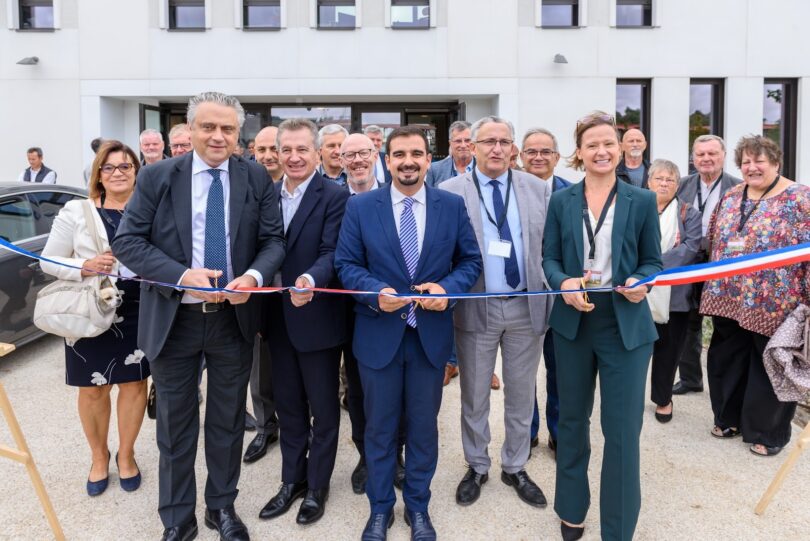The Syndicat Mixte pour l’Aménagement Hydraulique (SIAH) for the Croult and Petit Rosne Valley region inaugurated on Friday the Bonneuil-en-France wastewater treatment plant, which treats wastewater from 35 municipalities in the eastern district of the Val d’Oise department. Veolia, via its subsidiary OTV, led a consortium responsible for designing and carrying out the works, and will operate and maintain the plant until 2027. As well as increasing the plant’s treatment capacity and performance, the work, which is being carried out in line with a sustainable development approach, will enable wastewater to be used to produce green energy locally.
Worth a total of 199.4 million euros excluding VAT, of which 117 million for OTV, this 10-year contract has increased the plant’s treatment capacity from 350,000 to 500,000 population equivalent (P.E.).The priority given to reusing existing structures (biological basins, pretreatment buildings, etc.) has helped to significantly reduce the construction’s carbon footprint, as well as preserving sensitive natural areas.
The new plant demonstrates the SIAH’s commitment to efficient energy management and reducing dependence on fossil fuels. The sludge generated by the purification process is used to produce biogas, which is purified using the MemGas™ process developed by Biothane, a Veolia subsidiary, before being injected into the existing gas network. This renewable green energy source corresponds to the annual gas consumption of 1,750 new homes heated with gas. The heat produced by the treated water is also recovered using the Energido™ process to heat the administrative buildings. After treatment, some of the wastewater is reused as industrial water, reducing the pressure on water resources and helping to mitigate the effects of climate change.
The facility incorporates high-performance technologies that enable the Syndicat to comply with current environmental standards while anticipating those of the future. The treatment system installed is both robust and innovative, with at its heart the Hybas™ biological process developed by AnoxKaldnes, another Veolia subsidiary. This process combines MBBR (Moving Bed Biofilm Reactor) technology with activated sludge in a single tank, providing a compact and effective solution for eliminating organic matter and nitrogen, a worldwide concern since it causes eutrophication of water, a phenomenon responsible for the proliferation of algae and the deterioration of aquatic ecosystems. The Morée river will be given a new lease of life by improving water quality and restoring its landscape.
Anne Le Guennec, Senior Executive Vice President, Worldwide Water Technologies at Veolia, said: “The SIAH’s ambition to be a forerunner in terms of ecological transformation has enabled us to work together to make this plant an exemplary result. Veolia’s expertise in water technologies, but also in energy management, makes it possible to transform what was once considered a waste product into a value-creating resource. From wastewater and sewage sludge, we produce biomethane, a local, renewable and affordable energy source — that’s the ecology of solutions.”
Veolia has designed a number of wastewater treatment plants that recover wastewater as a source of energy and heat. In France, the Aeris plant at Cagnes-sur-Mer in the Alpes-Maritimes region, in operation since 2021, was the first positive-energy wastewater treatment plant. The MAERA and SIVAL plants, under construction in Montpellier (34) and Valenton (94), will also produce biogas to provide tens of thousands of residents with sustainable energy and heat.







